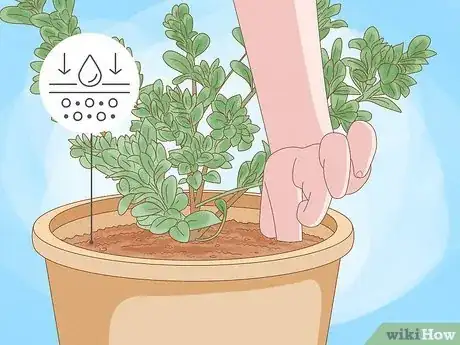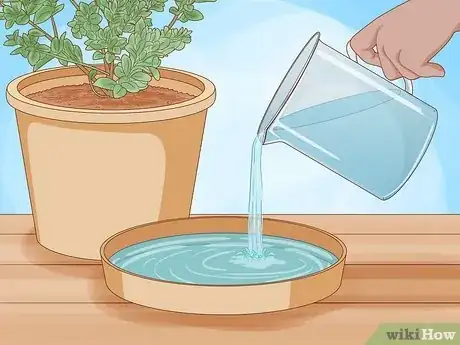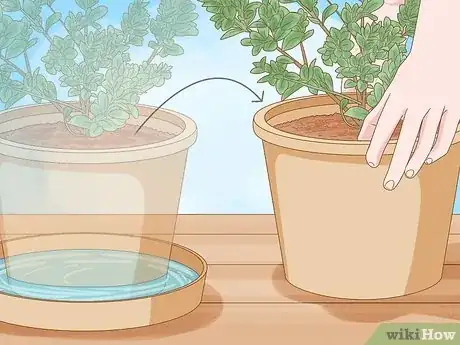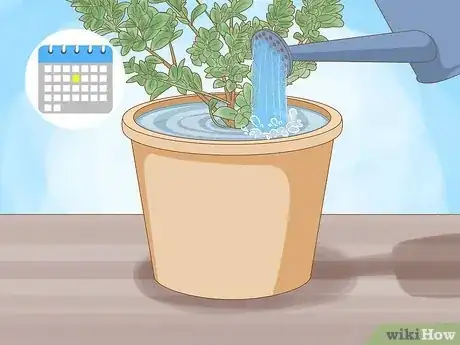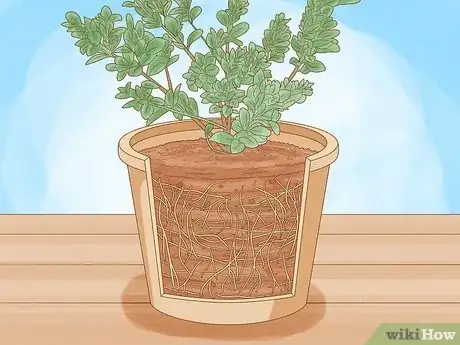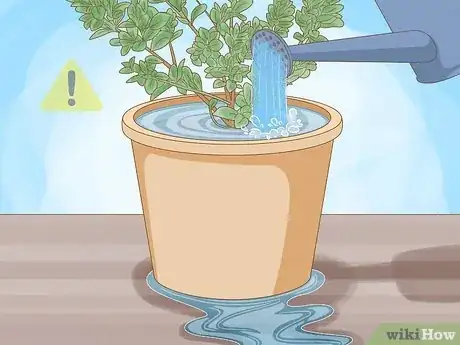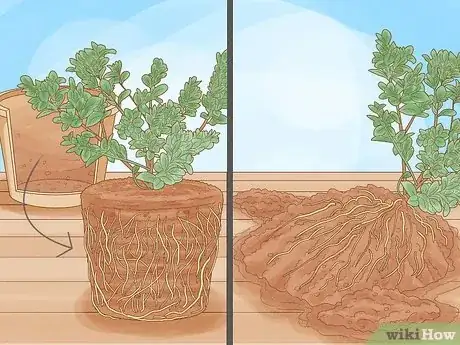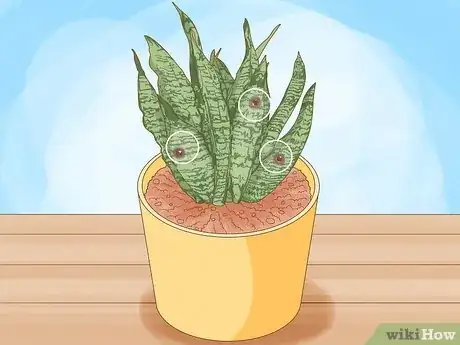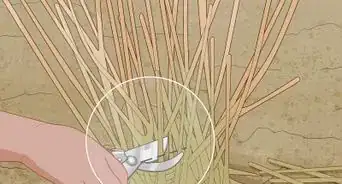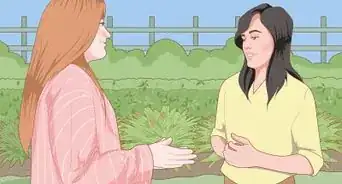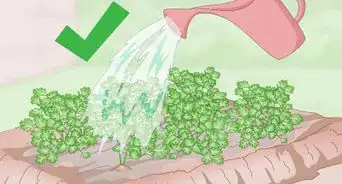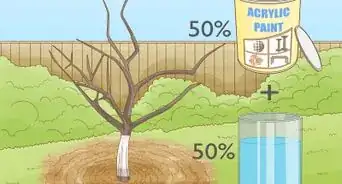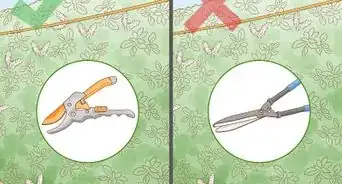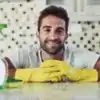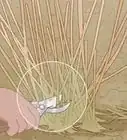This article was co-authored by Jon Rowland and by wikiHow staff writer, Hunter Rising. Jon Rowland is a Plant Specialist and the Founder of the Green House Center blog. With over eight years of plant and garden experience, he specializes in greenhouse care, lawn and garden maintenance, and home appliance recommendations. Jon aims to share his knowledge so that others can live a more convenient, efficient, and environmentally friendly lifestyle.
There are 9 references cited in this article, which can be found at the bottom of the page.
This article has been viewed 1,664 times.
Watering your houseplants is crucial to help them grow strong, but how can you ensure they get enough water? While you're probably used to pouring water on the soil's surface, you may have heard that you can water your plants from below so they thrive. There are a lot of benefits to watering from below, so keep reading to learn more about how to do it for your thirsty plants!
Steps
Bottom-Watering Your Plants
-
1Water your plants if the soil feels dry to the touch. Instead of watering on a set schedule, test the soil’s moisture levels at least once a week to determine when you need to water your plants. Push your finger about 2 in (5.1 cm) into the soil and check if it feels dry or moist. If the soil feels dry or crumbly, then it’s time to water your plant.[2]
- If the soil feels a little wet, hold off on watering for now so you don’t damage or stress the roots.
-
2Fill the bottom of a saucer or container with water. Many pots come with a saucer for liquid to drain into if you water from above, but you can use it for bottom-watering too. If your pot doesn’t have a saucer, use any bowl or container that’s a few inches deep. Put 1–2 inches (2.5–5.1 cm) of room temperature water into the container for watering.[3]
- If you’re watering multiple plants, you can even fill the bottom of a bathtub with water.
- Avoid using softened water since it has more minerals that could change the soil makeup and make it tougher for your plant to grow.
-
3Set the pot in the water for 10 minutes. Put your potted plant into the water so the bottom is completely submerged and leave it alone. The soil will pull the water up into the pot so it can reach the root ball of your plant.[4]
-
4Check if the topsoil feels moist to see if you’re finished watering. Put your finger 2 inches (5.1 cm) into the soil to see if it feels wet. If the soil absorbed enough water and it feels damp to the touch, then your plant has enough water.[5]
- If the topsoil still feels dry, let the pot sit in the water for up to 20 minutes longer.
-
5Lift the pot out of the water to let the excess drain out. Hold the pot over the container of water, and let any leftover water drip out from the pot’s drain holes. When no more liquid drips from the pot, move your plants back to where you want to keep them.[6]
- If you keep your potted plant on its saucer, dump out any excess water that’s leftover so your plant doesn’t reabsorb it.[7]
-
6Water your plants from the top once a month to remove salt deposits. If you always water your plants from the bottom, it could leave salts in your soil that harm your plant’s roots. Every fourth time you water, which is around once a month, use a watering can to pour it directly on the topsoil. Pour enough water into the pot so it runs out of the drainage hole and flushes the salt out.[8]
- Flush out salt deposits before you apply fertilizer to a potted plant, or else you may rinse away all the helpful nutrients.[9]
References
- ↑ https://extension.umd.edu/resource/watering-indoor-plants
- ↑ https://extension.umd.edu/resource/watering-indoor-plants
- ↑ https://extension.missouri.edu/publications/g6510?p=1
- ↑ https://sproutingindoors.com/should-you-bottom-water-plants/
- ↑ https://extension.missouri.edu/publications/g6510?p=1
- ↑ https://extension.missouri.edu/publications/g6510?p=1
- ↑ https://extension.umd.edu/resource/watering-indoor-plants
- ↑ https://www.purdue.edu/hla/sites/yardandgarden/leaf-spots-not-always-from-pests/
- ↑ https://extension.umd.edu/resource/watering-indoor-plants
- ↑ https://mgsantaclara.ucanr.edu/garden-help/watering-hydrophobic-soil/
- ↑ https://edmontonjournal.com/life/homes/gardening/growing-things-better-to-water-potted-plants-from-the-bottom
- ↑ https://drummersgardencenter.com/assets/uploads/2014/10/seed-starting-indoors.pdf
- ↑ https://sproutingindoors.com/should-you-bottom-water-plants/
- ↑ https://youtu.be/Jq8UtV4J1Po?t=192
- ↑ https://www.purdue.edu/hla/sites/yardandgarden/leaf-spots-not-always-from-pests/
- ↑ https://sproutingindoors.com/should-you-bottom-water-plants/

